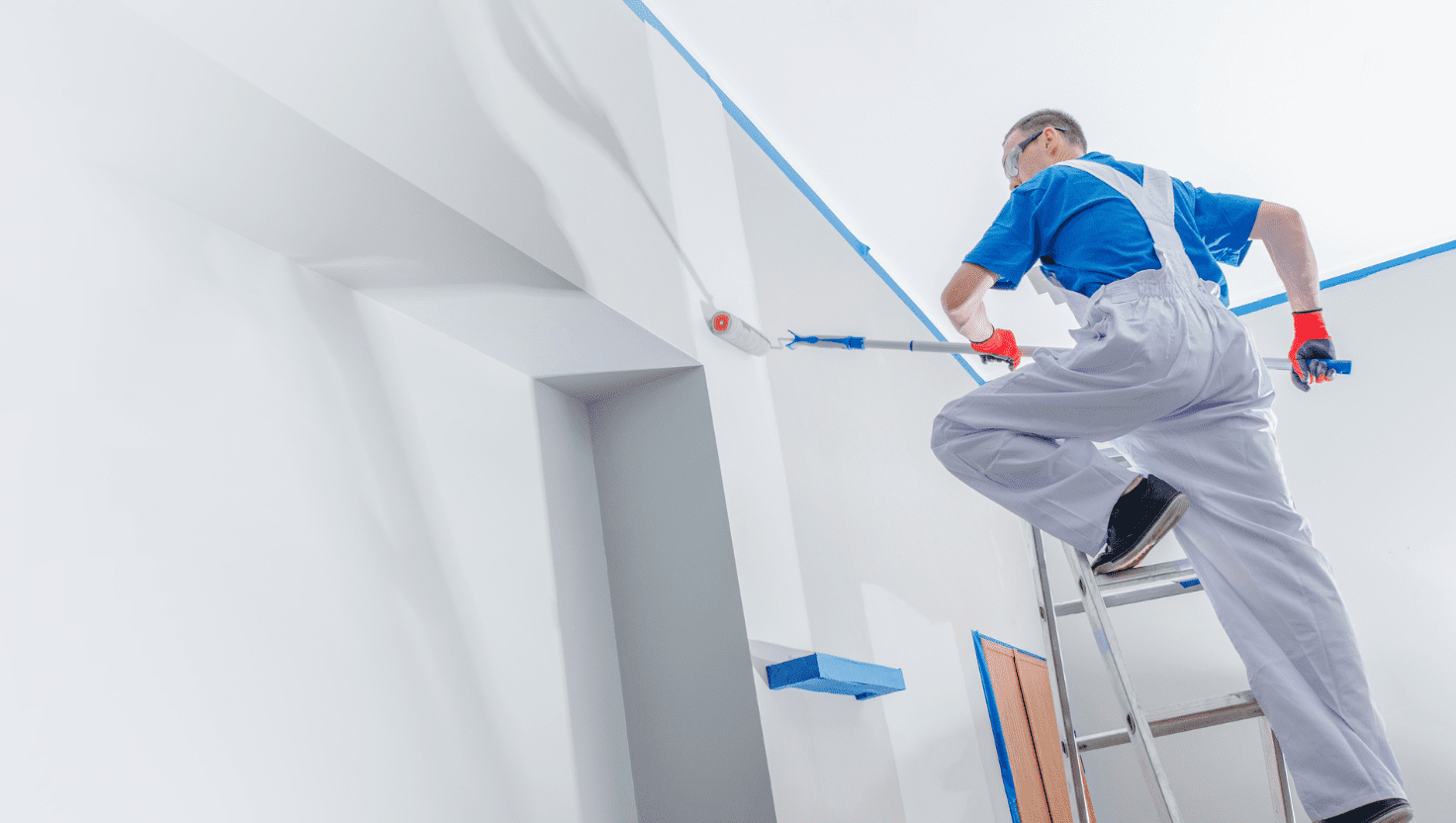Looking to refresh your home or protect it from Australia’s harsh elements? Selecting the right house paint is crucial for appearance, durability, and performance. This article discusses various paint types and essential factors to consider, such as climate, surface type, finish, environmental impact, and budget. Gain the knowledge and confidence to choose the perfect paint for your needs.
Whether you’re looking for exterior or interior painting, Contrast Painting is here for all your Perth residential painting needs. Get a free quote with us today or get in touch with our friendly team for more information on starting your journey to a beautifully re-painted home.
Water-based paints
Water-based paints are an eco-friendly and versatile option, appropriate for both interior and exterior surfaces. They are easy to clean, fast-drying, and emit fewer odours and volatile organic compounds (VOCs). Some common water-based paints include:
- Acrylic paint: This type of water-based paint is durable, UV-resistant, and suitable for exterior walls exposed to harsh weather conditions. Acrylic paint is available in various finishes, such as matte, satin, and gloss. Due to its resistance to fading and chalking, acrylic paint is ideal for Australia’s intense sunlight and fluctuating temperatures.
- Latex paint: Latex paint is a popular choice for interior walls, offering excellent adhesion, easy application, and low VOC emissions. It is available in different finishes, like flat, eggshell, and semi-gloss, allowing you to choose the perfect look for your home. Latex paint is known for its quick drying time and excellent coverage, making it a practical choice for DIY enthusiasts.
-
Oil-based paints
Oil-based paints have a reputation for durability and long-lasting finishes, making them ideal for high-traffic areas and surfaces that require frequent cleaning. However, they do emit higher levels of VOCs, are slower to dry, and require mineral spirits for clean-up. Examples of oil-based paints include:
- Alkyd paint: Often used for doors, trims, and cabinets, alkyd paint provides a hard, glossy finish and excellent coverage. Its durability and resistance to wear make it an excellent choice for surfaces prone to scuffs and scratches. However, alkyd paint can take up to 24 hours to dry, so it is essential to plan accordingly.
- Enamel paint: Enamel paint is known for its durability and high-gloss finish, making it ideal for metal surfaces, such as window frames, railings, and gates. It is also resistant to rust, ensuring long-lasting protection for your home’s metal elements.
Low VOC and natural paints
As we become more environmentally conscious, low VOC and natural paints have gained popularity. These paints are better for indoor air quality and are formulated using fewer chemicals.
- Low VOC paint: This type of paint releases fewer harmful chemicals into the air and is suitable for those with allergies or chemical sensitivities. Low VOC paints come in various finishes and are an excellent choice for homeowners seeking a healthier living environment.
- Natural paint: Made from plant-based ingredients, natural paints are biodegradable and emit minimal odours, making them a great eco-friendly alternative. They are available in a range of colours and finishes and are suitable for both interior and exterior applications. However, natural paints may not be as durable as their synthetic counterparts, so it is essential to research the specific product before committing.
Specialty paints
Homeowners can also choose from a range of specialty paints, designed for specific surfaces or purposes.
- Anti-mould paint: Ideal for bathrooms, laundry rooms, and other damp areas, anti-mould paint inhibits mould growth, protecting your walls and ceilings. It’s available in various finishes and colours and is a must-have for maintaining a healthy and clean environment in moisture-prone areas.
- Heat-resistant paint: Suitable for areas exposed to high temperatures, such as chimneys, barbecues, and stoves, heat-resistant paint can withstand extreme heat without peeling or blistering. These paints are designed to protect surfaces from heat damage and come in various colours to suit your style preferences.
- Textured paint: Textured paint is perfect for hiding imperfections or adding visual interest to walls and ceilings. It is available in a range of textures, such as sand, stone, or stucco, and can be applied using various techniques to achieve the desired effect. Textured paint can create a unique, custom look for your home while also providing added durability to surfaces.
- Primer: Primers are essential for preparing surfaces before painting, ensuring proper adhesion of the paint and preventing issues such as peeling or blistering. There are several types of primers available, including oil-based, water-based, and shellac-based, each with its unique properties and advantages. Selecting the appropriate primer for your surface and paint type will ensure a successful paint job.
- Chalk paint: Chalk paint is a popular choice for furniture makeovers and DIY projects, offering a matte, chalky finish that can be easily distressed for a vintage or shabby-chic look. It adheres well to various surfaces without the need for priming or sanding, making it a convenient option for quick transformations.
- Magnetic paint: This innovative paint option contains magnetic particles, allowing you to turn any wall or surface into a functional magnetic board. It is ideal for children’s rooms, home offices, or any space where you want to display artwork or notes without damaging the walls.
Choosing the right paint for your home
When selecting the ideal paint for your home in Australia, consider the following factors:
Climate
Australia’s diverse climates, from tropical to temperate, can influence the type of paint you should choose. Here’s how climate can affect your paint selection:
- Intense sunlight: For areas with intense sunlight, UV-resistant paints are crucial. These paints can better withstand fading and chalking, ensuring the longevity of the paint job.
- Humidity: In humid regions, moisture-resistant paints are essential. These paints can prevent issues such as mould and mildew growth, ensuring a healthier living environment and protecting your home’s surfaces.
- Coastal areas: For homes in coastal areas, salt-resistant paints are vital. These paints can better withstand the corrosive effects of salt air, protecting your home from deterioration.
- Temperature fluctuations: Paints that can withstand significant temperature fluctuations are necessary in places with extreme temperature changes. This ensures that the paint will not crack, peel, or blister due to thermal stress.
Surface type
The type of surface you are painting, such as wood, metal, or concrete, will affect the choice of paint and primer required. Understanding the characteristics of each surface type can help you choose the best paint and primer combination.
- Wood: For wooden surfaces, it is crucial to select a paint that is flexible and can expand and contract with the wood’s natural movement. Priming the wood with a high-quality wood primer is essential to ensure proper adhesion and prevent issues such as rot and insect damage.
- Metal: For metal surfaces, it is essential to choose a paint specifically designed for metal, such as enamel or rust-preventative paint. These paints offer better adhesion and protection against rust and corrosion. A metal primer should also be used to prepare the surface and enhance the paint’s durability.
- Concrete: Concrete surfaces require a paint that can withstand moisture and resist efflorescence. Masonry paint or elastomeric paint are excellent choices for concrete surfaces. Additionally, a concrete primer or sealer should be applied before painting to ensure proper adhesion and protection.
-
Finish
Consider the desired finish, such as matte, satin, or gloss, as this can impact the overall aesthetic of your home and the durability of the paint.
- Matte: Matte finishes offer a non-reflective, velvety appearance that can hide surface imperfections. However, they may be less durable and harder to clean than other finishes.
- Satin: Satin finishes have a soft sheen that is easier to clean than matte finishes. They provide a balance between appearance and durability, making them suitable for high-traffic areas and surfaces that require regular cleaning.
- Gloss: Gloss finishes offer a shiny, reflective appearance and are highly durable and easy to clean. However, they can highlight surface imperfections, so proper surface preparation is crucial.
Environmental impact
Selecting eco-friendly options like low VOC and natural paints can help reduce your environmental footprint while maintaining a healthier living space.
- Low VOC paints: These paints release fewer harmful chemicals into the air, making them suitable for those with allergies or chemical sensitivities. They also contribute to improved indoor air quality.
- Natural paints: Made from plant-based ingredients, natural paints are biodegradable and emit minimal odours. They are an excellent eco-friendly alternative for homeowners who value sustainability and environmental responsibility. However, keep in mind that natural paints may not be as durable as their synthetic counterparts, so research the specific product before committing.
Budget
The price range of paints can vary significantly, so consider your budget when making a decision. However, it is essential to prioritise quality and durability, as cheaper paints may require more frequent touch-ups or repainting. Here are some budget considerations:
- Quality vs price: While it may be tempting to choose a lower-priced paint, investing in higher-quality paint can save you time and money in the long run. Premium paints often provide better coverage, durability, and colour retention, resulting in a longer-lasting finish.
- DIY vs professional: While hiring a professional painter can be more expensive upfront, their expertise and efficiency often will save you time and money in the long run. If you choose to paint your home yourself, be prepared to invest time in learning proper techniques and budget for potential mistakes or touch-ups.
Conclusion
Selecting the right paint for your home is essential to achieving a beautiful and long-lasting finish that can withstand Australia’s diverse and challenging climates. Understanding the different types of paints available and considering factors such as climate, surface type, finish, environmental impact, and budget will help you make an informed decision.
For a game-changing and innovative painting experience, we highly recommend trying Contrast Painting. With our selection of paint with remarkable coverage, ease of use, and exceptional durability, Contrast Painting is a leading Perth painting company and a fantastic choice for any painting project. Don’t hesitate—get in touch with us to give your home the stunning makeover it deserves with Contrast Painting today!







